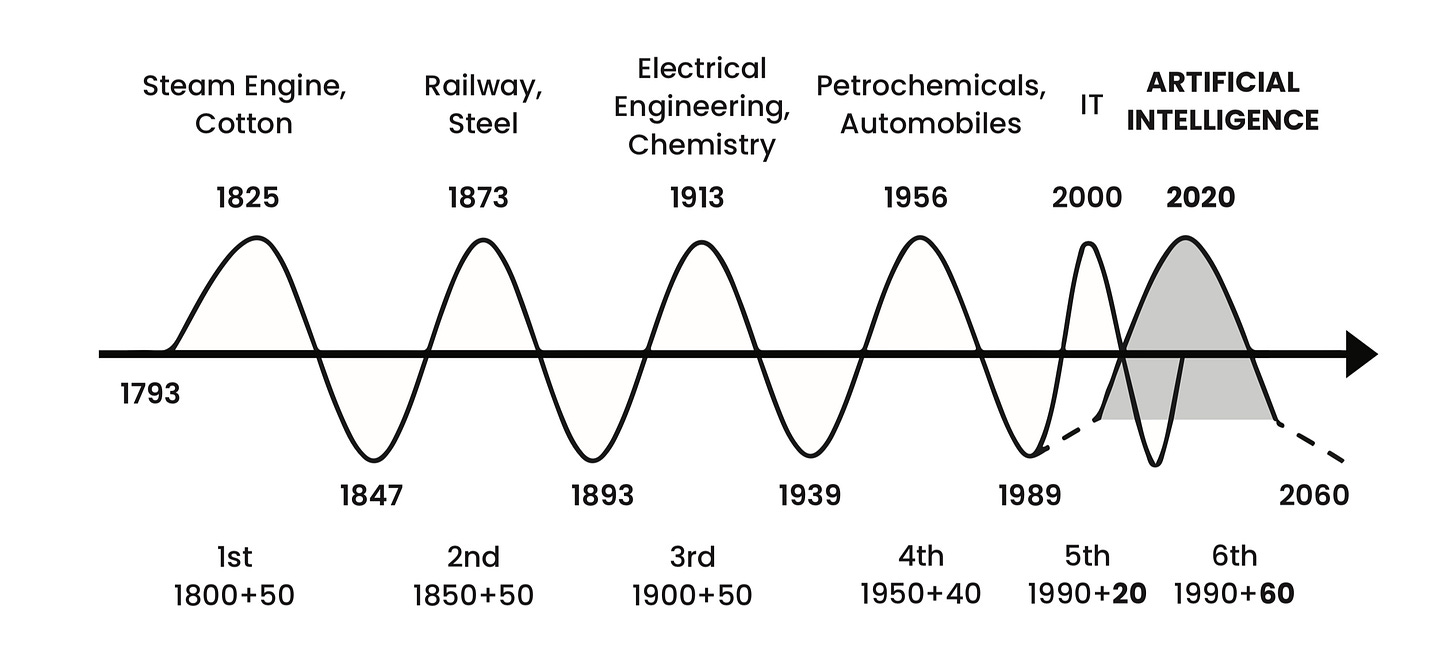AI in 2040: What Gen Beta Will Say About Today’s Use of AI
Looking Forward to Look Back at What We Got Right (and Utterly Wrong) About AI
“Does AI supercharge our output or lower our standards?” was the guiding question when I joined “The Neuron” podcast as a guest last week. I have been exploring this topic for a while now. I am even developing two new courses with LinkedIn Learning on the topic of using AI responsibly to create less AI slop. (Yes, we need to talk about it. But that’s another story for another day. Stay tuned…).
We discussed various angles of this topic on the show. Listen to the full episode on The Neuron on Thursday. One of the last questions by the hosts was especially great, because it got me thinking. That’s why I’m covering it in more depth in today’s article:
» Imagine a teenager listening to this episode in 2040. What do you hope they’ll say we got right—and what might they laugh about the way we talk about AI today? «
—Corey Noles, Co-Host of The Neuron
Why Does 2040 Even Matter?
First of all, 2040 seems like a long time into the future, but it’s just 15 years from today. As a comparison, 15 years ago, big data started to emerge as a topic. Machine learning, the hype before Generative AI, wasn’t even really a thing, yet. And yet, here we are, talking about AI.
But these innovation cycles like big data and AI aren’t something new. In fact, Soviet economist Kondratiev observed longer cycles of innovation about a century ago: cotton, steel, electricity, and so on have all followed 40-60-year-long waves of innovation adoption. Information technology and AI, though, are on a much faster trajectories; plus, they’re overlapping. So, there’s a lot of potential stemming from both waves ahead of us.
Over a few decades, technologies from the compute to the internet and mobile devices have seen wide-scale use and adoption. Typically, societies make valuable learnings as they go through the adoption cycle, including the need for regulation, standardization, etc. Yet, what comes to mind for AI is the observation that humans overestimate the short-term impact of new technologies while underestimating their long-term impact. So, let’s talk about what today’s newborns will laugh about in the future?
NEW ONLINE COURSE — Mitigate AI Business Risk
Business leaders are under pressure from their boards and competitors to innovate and boost outcomes using AI. But this can quickly lead to starting AI projects without clearly defined, measurable objectives or exit criteria.
Learn how to implement proven risk mitigation strategies for starting, measuring, and managing AI projects. Along the way, get tips and techniques to optimize resourcing for projects that are more likely to succeed.
What We Underestimate
More than 25 years ago, I learned how to build my first website during a summer internship. To build it meant to develop it in HTML in a text editor, from scratch. Fast-forward 2-3 years, and static web content had turned into interactive Macromedia/ Adobe Flash animations. Clunky experiences turned into professionally designed web presences. A few years after that, e-commerce started booming, and many more online services have emerged ever since. By 2014, the Internet had evolved a lot, all within the span of 15 years.
Back then, it was hard to imagine today’s inter-connected world with millions of different online services. But Flash animations, writing HTML code, and browsing basic websites have all evolved. That’s why I wouldn’t be surprised if in 2040, teenagers said about our current use of AI:
“What do you mean you used AI to draft emails and summarize meeting notes?”
“Why didn’t you just send your avatars to hash it out within 5 minutes?”
“Why did you even have a meeting if it could have been an email to begin with?”
“What do you mean you called customer service yourself when you had a problem?”
These days, the promise of Generative AI and Agentic AI seems to be mainly about productivity increases. And somehow it seems that even the biggest software firms on the planet are unable to conceive big, moonshot-type innovations instead of incrementally filling spreadsheets or offering writing assistants to users. The forces that slow down innovation and kill moonshots at any other large company are at play here as well.
But AI can enable much more than just productivity increases. So much more…hyperpersonalized entertainment, autonomous commerce and procurement, new materials and compounds discovery, etc. After all, it’s a basic technology—like electricity.
What We Need to Get Right
At an early age, we teach our children very critical safety rules. For example, the screwdriver does not go into the power outlet or the consequences will be very bad. But if you plug in your favorite lamp or light, electricity can be very safe and useful. Later, as students, children and teenagers learn about electricity in school or in college. Sometimes, that might be the foundation that sparks curiosity and inventor genes to envision big bold new things like the device on which you are reading this article.
I hope that by 2040, we will teach our children similar fundamental rules about AI: the dos and don’ts, how the technology works, and about the exciting potential that AI holds when its applied safely and society benefits.
We are already seeing AI conscientiousness and isolated pushback against overuse. ChatGPT & Co. are influencing how we write and speak (remove em dashes to avoid sounding like AI or structures found in AI output making their way into everyday communication).
Since 2023 and ahead of mainstream media coverage, I’ve written a series of articles on topics that are surfacing now with increased use of AI:
These are some of the human and interpersonal aspects of whether, when, and how to use AI, and the things we need to get right.
Summary
AI is one of several overlapping innovation waves that are shaping societies globally. Its short-term impact is frequently overestimated while its long-term impact is typically underestimated. This is visible in the currrnt discussions around using AI as a productivity booster and the AI-motivated workplace changes and layoffs.
But looking ahead, future generations will view today’s use of AI as inferior to what will likely be possible within the next 1-2 decades. We will have moved past using AI to draft emails (or so I hope!).
Instead, we will have taught our children about the dangers of improper AI use (lien electricity) and have excited them about the abundance of opportunities to use AI to make an impact.
What do you think the 2040 youth will say about our current use of AI?
Listen to this episode on the podcast: Apple Podcasts | Other platforms
Explore related articles
Become an AI Leader
Join my bi-weekly live stream and podcast for leaders and hands-on practitioners. Each episode features a different guest who shares their AI journey and actionable insights. Learn from your peers how you can lead artificial intelligence, generative AI, agentic AI, and automation in business with confidence.
Join us live
July 15 - Jon Reed (Industry Analyst & Co-Founder of diginomica) and I will discuss the state of Enterprise AI and Agents as we head into the summer.
July 29 - Steve Wilson (Project Leader at OWASP Foundation & Chief Product Officer at Exabeam) will share how organizations can secure their AI agent deployments.
August 12 - Jon Reed (Industry Analyst & Co-Founder of diginomica) is back on the show when we will bust the most common Enterprise AI myths. [More details to follow…]
August 26 - Scott Rosenkrans (VP of AI Innovation at DonorSearch) will share how AI makes a positive impact in non-profits. [More details to follow…]
Watch the latest episodes or listen to the podcast
Follow me on LinkedIn for daily posts about how you can lead AI in business with confidence. Activate notifications (🔔) and never miss an update.
Together, let’s turn hype into outcome. 👍🏻
—Andreas










